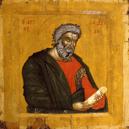Статья посвящена анализу летописного Сказания о хождении апостола Андрея на Русь в составе Повести временных лет. Обосновано существование трех редакций Сказания: дунайской, древнерусской и варяжской. Первоначальное дунайское Сказание об Андрее не содержало рассказа о варягах и «варяжском пути». Фразы о варягах представляют собой позднейшую вставку в древнерусскую переделку Сказания. Дунайская редакция о хождении апостола Андрея через русско-славянские земли по Дунаю в Рим была создана в начале Х в. болгаро-моравским духовенством, последователями Кирилла и Мефодия. Вопрос о времени и месте создания двух других редакций требует изучения.
THE DANUBE WAY OF THE APOSTLE ANDREW
The article is devoted to the analysis of the chronicle Legend about the Apostle Andrew's trip to Russia, contained in the «Tale of bygone years». On the basis of logical and linguistic analysis, the author comes to the conclusion that there are three versions of the Legend: the Danube, the old Russian and the Varangian. In the original Danube version of the Tale of Andrew there were no phrases about the Varangians and the «Varangian way». They represent a later insertion in the old Russian alteration of Legend. The Danube edition of journey of the Apostle Andrew through the Russo-Slavic lands along the Danube to Rome was established in the beginning of the X century in Bulgaria by disciples of Cyril and Methodius of Great Moravia. The question of the time and place of the other two editions requires study.
 Ранний опыт государственного строительства большевиков и Конституция РСФСР 1918 года
Ранний опыт государственного строительства большевиков и Конституция РСФСР 1918 года
 7
7
 25314
|
Официальные извинения
25314
|
Официальные извинения
 972
972
 104968
|
Становление корпоративизма в современной России. Угрозы и возможности
104968
|
Становление корпоративизма в современной России. Угрозы и возможности
 239
239
 84553
84553

